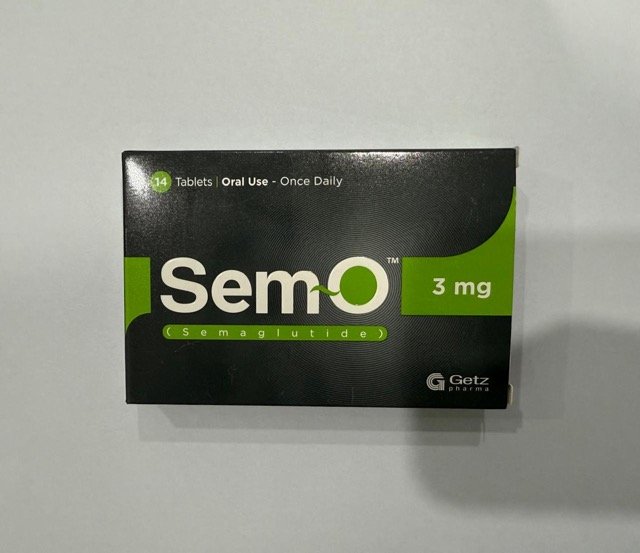The 2019-nCoV infection, also named Wuhan coronavirus infection, is different in symptoms and signs from that of other viral infections. Most people who contract the new coronavirus do not exhibit upper respiratory illness symptoms.
The SARS infection in 2002 and the Mers-CoV infection in 2012 infected more than 10,000 individuals. SARS-CoV and MERS-CoV had death rates of approximately 10% and 37%, respectively. However, the 2019-nCoV (Wuhan Coronavirus) seems more deadly and is becoming a global epidemic as most countries have reported confirmed cases.
Case definitions for 2019-nCoV infections:
-
PUI (Person under investigation):
-
A person who has a fever
-
Pneumonia or an acute respiratory disease
-
Any of the corresponding
-
Travel to Wuhan, China, within 14 days of becoming unwell
-
Close contact with a 2019-nCoV case that has been identified or is suspected
-
Close contact with a person who has had an acute respiratory illness and visited Wuhan, China within the previous 14 days of the commencement of their sickness
-
-
-
Probable Case for 2019-nCoV:
- An individual with a fever of 38 C and
-
New-onset dyspnea or cough
-
Indications of a serious sickness (such as ARDS) or an influenza-like illness with potentially fatal side effects such as encephalitis and myocarditis
- any of the following:
- Travel to Wuhan, China, within 14 days of becoming unwell
- Close contact with a 2019-nCoV case that has been identified or is suspected
- Close contact with a person who has had an acute respiratory illness and visited Wuhan, China within the previous 14 days of the commencement of their sickness
- Whose 2019-nCoV laboratory diagnostic is either unavailable or negative (if specimen quality of timing is suspect)
-
- An individual with a fever of 38 C and
-
Presumptive Positive Case for 2019-nCoV:
- an individual whose Public Health Ontario Laboratory screening result was positive but was not verified by the National Microbiological Laboratory
-
Confirmed Case for 2019-nCoV:
- A verified case is one that has had at least two distinct genomic targets identified by real-time PCR or one target identified by sequencing AND confirmed by the National Microbiological Laboratory using nucleic acid testing.
The following information regarding the novel China coronavirus infection was derived from a study that was just released. [Ref].
Statistics of the 2019 novel China Coronavirus (2019-nCoV) infection:
Among the 41 patients who had confirmed 2019-nCoV infection, 30 were males and 11 patients were females. Their mean age was 49years. 13 patients required ICU care with ages ranging from 41 to 61 years. 27 (66%) of the infected patients had exposure to the seafood markets. 13 (32%) of 2019-nCoV infected patients had associated comorbid illnesses out of which 38% required ICU care.
Among the infected patients with comorbidities, 20% had diabetes, 15% had hypertension, 15% had cardiovascular diseases, and 2% had chronic obstructive pulmonary diseases, malignancies, and liver diseases.
Six patients had passed away overall as of January 22nd, and 28 patients had been released. 5 of the 6 people that passed away happened in the intensive care unit.
Symptoms of the 2019 novel China Coronavirus (2019-nCoV) infection:
Symptoms of the 2019-nCoV infection are similar to any viral type of pneumonia. Contrary to the other coronaviruses (SARS and MERS-CoV), the 2019-nCoV infected patients do not have upper respiratory tract symptoms like flu, sneezing, and sore throat.
Furthermore, up to 25% of the patients who had SARS and MERS-CoV infections had diarrhea which was present in only one patient infected with 2019-nCoV infection.
-
Fever in 2019-nCoV infection:
- The most frequent sign is a fever. 40 (98%) of the 41 patients who were hospitalized had a fever when they first arrived.
- Of the 13 patients who required ICU care, all patients had a fever.
- 78% of the patients had a temperature of greater than 38C (100.4F)
-
Chest symptoms in the 2019-nCoV infection:
- The majority of the patients had symptoms related to the respiratory tract.
- The cough was present in 31 (76%) of the patients.
- Among the 13 patients admitted to ICU, 11 patients had a cough.
- Phlegm production was present in 11 patients while hemoptysis was seen in only 2 patients.
-
Shortness of breath:
- Dyspnea or shortness of breath was present in 22 out of 40 patients.
- Among the 22 patients who had dyspnea, 12 (92%) required ICU care.
- Dyspnea on presentation had a strong association with admission to the ICU care and death.
- 12 patients had a high respiratory rate. 8 (62%) of the patient among these were admitted to the ICU.
-
Headache and Bodyaches:
- Fatigue and myalgia were present in 18 (44%) of the patients.
- Headache was present only in 3 (8%) of the patients.
-
Other symptoms:
- One patient presented with diarrhea.
Laboratory investigations in the 2019-nCoV infection:
Among the 41 patients studied so far, the following laboratory parameters were assessed and compared.
-
Blood CBC:
- 70% of the patients had a total WBC count of less than 10,000/ul.
- However, among patients who required ICU care, only 46% had a TLC count of less than 10,000/ul.
- Most patients who required ICU care had high WBCs counts.
- Lymphopenia was present in 63% of the individuals. Compared to patients who did not require ICU care, lymphopenia was found in 85% of those individuals.
- Thrombocytopenia was found in only 5% of the patients.
-
Coagulation Profile:
- All of the patients' coagulation profiles, including prothrombin time (PT) and activated partial thromboplastin time (aPTT), were normal.
- D dimers were significantly elevated in patients who require ICU care (2.4 mg/L vs 0.5 mg/L).
-
Liver function tests:
- 32 Units/L was the average ALT. Patients who needed ICU care had mean ALT levels that were considerably higher than those who did not (49 U/L vs. 27 U/L).
- The mean AST was 34 u/l. In Patients who required ICU care, the mean AST was 44 U/l.
- Similarly, the total bilirubin was also significantly raised in the ICU patients (14 mmol/L vs 10.8 mmol/L)
- Serum albumin was significantly reduced in patients who require ICU care. In contrast to the mean serum albumin of 34.7 gm/dl in patients who did not need ICU care and the mean serum albumin of 27.9 gm/dl in those who did, the mean serum albumin was 31.4 gm/dl in all other patients.
-
Renal Function tests:
- Serum Creatinine, Sodium, and potassium were not significantly altered.
-
Creatine kinase was not significantly abnormal.
-
LDH (Lactate dehydrogenase):
- The mean LDH was 286 U/l, however, patients who required ICU care had a mean LDH level of 400 U/l.
- LDH remained significantly elevated in patients who required ICU care. 92% of the patients in the ICU had LDH levels of greater than 245 U/l compared to 63% who did not require ICU care.
- Greater than 28 pg/ml hypersensitive troponin levels were present in 31% of patients in the ICU group and 4% of patients who weren't in the ICU (greater than 99th percentile).
- The mean procalcitonin level was 0.1 ng/ml in both groups.
-
Chest radiographs:
- Chest radiographs were abnormal in all the patients. Patients had bilateral, multilobular, and subsegmental areas of consolidation.
- 40 of the 41 patients (98%) had bilateral abnormal chest radiographs.
- 100% of the patients in the ICU and 96% of the non-ICU patients had bilateral abnormal chest radiographs.
- On the CT chest, the majority of the patients had bilateral ground-glass opacities.
Pneumonia affected every patient with the new coronavirus (2019-nCoV). Of the patients, 29% experienced ARDS (Acute respiratory distress syndrome). 15% of the patients had RNAaemia, 12% of the patients developed an acute cardiac injury, and 10% of the patients developed secondary infections. 10% of the patients required mechanical ventilation. 5% of the patients had refractory hypoxemia and received extracorporeal oxygenation.
In Conclusion:
Most patients with the COVID-19 (novel coronavirus) infection present with fever and cough. Upper respiratory tract symptoms are minimal compared to other coronaviruses.
Most patients have bilateral pneumonia on chest radiographs and shortness of breath. Mortality in the ICU settings is high accounting for about 38%. Another recently published study has reviewed data from more than a thousand patients who were infected with COVID-19 infection. It is thought that antimalarial drugs (chloroquine and hydroxychloroquine) may prevent us from getting coronavirus pneumonia.



.jpeg)



